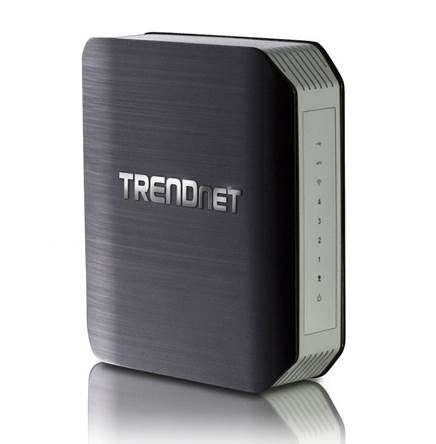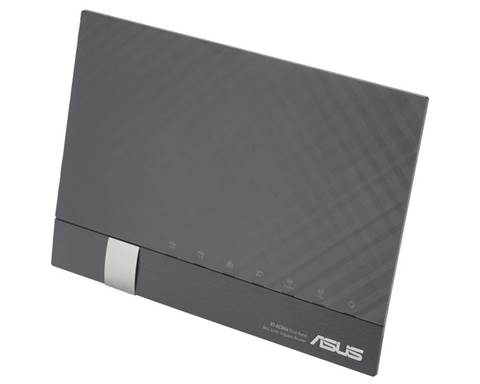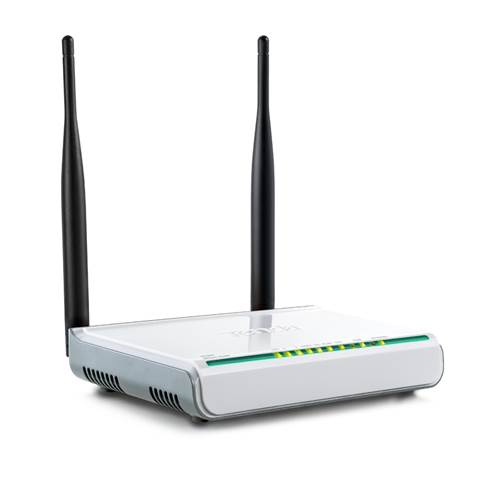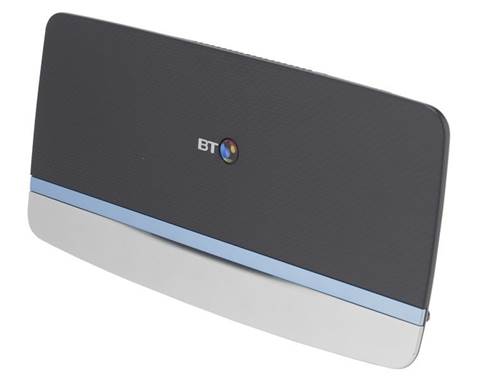Trendnet
TEW-812DRU
This
dual-band 802.11ac router needs an Ethernet internet connection and has four
further Gigabit Ethernet ports for sharing the connection. Its wireless
networks are secure by default and the basic configuration is clear and
straightforward, though it loses this clarity when you delve deep into its
configuration to set up its advanced tools.
The router
performed particularly well in our 5GHz tests, and was the second fastest when
connected to our laptop (82.4Mbps at 10m) but the connection was unstable at
20m. It maxed-out our USB 2.0 bottle-neck at 10m using its matching TEW-805UB
USB adapter with a speed of 158.5Mbps, but fell to fifth at 20m with a speed of
46.7Mbps.

Trendnet TEW-812DRU
At 2.4GHz
it was fifth fastest when connected to the laptop (37.7Mbps). This improved
slightly to 39.6Mbps with its own adapter, but it dropped to ninth place and
couldn’t maintain a signal at 20m.
Verdict
The
TEW-812DRU has a clear basic interface, good Wi-Fi performance using 5GHz and
an affordable price. However, we found its connection to be unstable at longer
range.
|
Specs
· Model: D6200
· Price: $141.88
· Wi-Fi: 802.11a/b/g/n/ac
· Ports: 4x Gigabit Ethernet, 1x USB
2.0
· Security: WPS, WPA/WPA2
· Dimensions: 180 x 155 x 48mm
Rating
· Features: 4/5
· Performance: 4/5
· Ease of use: 4/5
· Value for money: 4/5
· Overall: 4/5
|
Asus RT-AC56U
Asus’s
RT-AC56U is $113.53 cheaper than the same company’s Silver Award- winning
RT-AC68U. Its ports are similar and it requires an Ethernet internet
connection. It also has four Gigabit Ethernet ports and two USB ports, one of
which is USB 3.0 compatible. Its user interface is simple on the surface but we
found some of the advanced options used non-standard names, which made them
difficult to recognize.
Its
performance on the 2.4GHz network was disappointing. Our laptop got speeds of
36.6Mbps at 10m, which is sixth overall, but we couldn’t get a signal at 20m.
With the $100.18 USB-AC53 dongle, this improved to 56.7Mbps at 10m (fifth
fastest) but only managed 5.3Mbps at 20m.

Asus RT-AC56U
Its
performance on the 5GHz network was better, though it only managed ninth place
connected to the laptop at 10m, with a speed of 60.2Mbps. However, its own USB
adapter produced a joint top speed at 10m and came second only to the other,
more expensive Asus router at 20m.
Verdict
Although
the RT-AC56U’s performance at 5GHz is excellent, we were disappointed by its
2.4 GHz performance, particularly at long range. It also works best when
connected to its own USB adapter.
|
Specs
· Model: D6200
· Price: $186.96
· Wi-Fi: 802.11a/b/g/n/ac
· Ports: 4x Gigabit Ethernet, USB
3.0 & USB 2.0
· Security: WPA/WPA2 & WPS
· Integrated VPN
· AiCloud local media streaming
· Dimensions: 147 x 205 x 66 mm
Rating
· Features: 4/5
· Performance: 4/5
· Ease of use: 4/5
· Value for money: 3/5
· Overall: 4/5
|
Tenda
W300D
The Tenda W300D is by far the cheapest router in this test, but
it's only single band, so it works solely on the 2.4GHz network. It has a
built-in ADSL modem, so is best suited to that type of broadband. However one
of its four Ethernet ports can also be used to connect it to cable broadband,
if you have that type of connection. Either way, if your existing router has
broken, this is a very cheap way of getting a replacement.
We were
keen to see how such a low-priced router would compare with the more expensive
competition, so we tested it with our laptop’s built-in Wi-Fi, where it managed
27.7Mbps at 10m, the second slowest router with only the Billion BiPac 6300NXL performing worse. It was slower using Tenda’s own W311U USB adapter, ($11.69) but still beat the
Billion router. Disappointingly, it didn’t manage to
connect at 20m using either option.

Tenda W300D
Verdict
This router
doesn’t support dual-band, but it’s incredibly cheap. However, its performance
in our tests was disappointing, so its price is the only reason to recommend
it.
Specification
|
Specs
· Model: D6200
· Price: $40.27
· Wi-Fi: 802.11b/g/n
· Wireless Speed: 300Mbps
· Ports: 1 x RJ11 port, 3 x
10/100Mbps auto-negotiation (Auto MDI/MDIX) LAN ports, 1 x 10/100Mbps
auto-negotiation WAN/LAN Interchangeable port (Auto MDI/MDIX)
· Security: WEP, WPA-PSK/WPA2-PSK
· Dimensions: 172 x 119 x 31mm
Rating
· Features: 3/5
· Performance: 2/5
· Ease of use: 4/5
· Value for money: 5/5
· Overall: 4/5
|
Our verdict
ISP routers
don’t always produce the best performance, but if you’re with BT, we reckon
your Home Hub 5 router is the best around. Luckily, anyone not using the
service can still buy it to use with other companies’ broadband, even cable and
fiber services. It performed brilliantly in our tests and wins our Gold Award.

If you’re with BT, we reckon your Home Hub 5
router is the best around
If you’re a
speed demon looking for the fastest router around at any cost, the Silver
Award-winning Asus RT- AC68U blitzed our 5GHz test when used with its own
adapter, and came second in the 2.4GHz test.
You need to
pair it with its own hardware, and this adds to the already high expense, but
it is consistently fast.
The Bronze
Award, by contrast, goes to the cheapest 802.11ac router we tested. The Tenda W1800R’s interface leaves a lot to be desired and it
shouldn’t be tackled by beginners, but none of these impacts on the
performance, which is superb for the price.